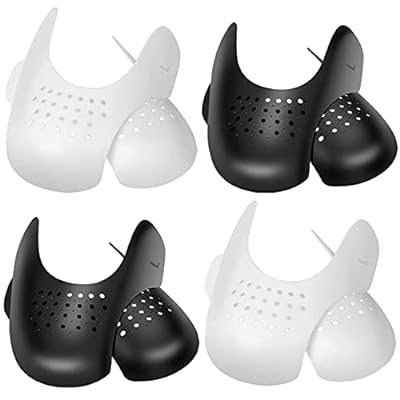Introduction:
In industries where foot protection is paramount, composite toe inserts have emerged as a reliable solution to ensure both safety and comfort for workers. These innovative inserts offer a lightweight and durable alternative to traditional steel toe caps, providing essential protection against impact, compression, and other workplace hazards. In this article, we’ll explore the benefits and applications of composite toe inserts, highlighting their role in promoting workplace safety and enhancing overall well-being.
Lightweight and Comfortable:
One of the primary advantages of composite toe inserts is their lightweight construction, which offers a significant improvement in comfort compared to traditional steel toe caps. Made from materials such as fiberglass, carbon fiber, or Kevlar, these inserts provide ample protection without adding unnecessary bulk or weight to footwear. This lightweight design reduces fatigue and discomfort during long hours of wear, allowing workers to focus on their tasks without distraction.
Impact and Compression Protection:
Composite toe inserts are engineered to meet stringent safety standards, providing reliable protection against impact and compression injuries in hazardous work environments. Despite their lighter weight, these inserts offer comparable strength and durability to steel toe caps, effectively shielding the toes from falling objects, heavy machinery, or other workplace hazards. Additionally, the non-metallic composition of composite toe inserts eliminates the risk of conductivity, making them safe for use in electrical environments.
Temperature Regulation:
Unlike steel toe caps, which can conduct heat or cold, composite toe inserts offer superior temperature regulation, ensuring year-round comfort for workers. The insulating properties of materials such as fiberglass or Kevlar help maintain a comfortable internal temperature within footwear, preventing excessive heat buildup in hot conditions or heat loss in cold environments. This enhanced thermal insulation not only improves comfort but also reduces the risk of discomfort or injury associated with extreme temperatures.
Non-Metallic and Non-Magnetic:
Another notable advantage of composite toe inserts is their non-metallic and non-magnetic properties, which offer several practical benefits in various workplace settings. Unlike steel toe caps, composite inserts are not susceptible to corrosion, rust, or magnetic interference, making them suitable for use in industries where metal detection or non-magnetic equipment is required. Additionally, the absence of metal components reduces the likelihood of triggering security scanners or interfering with electronic devices.
Customizable Fit and Compatibility:
Composite toe inserts are available in a variety of shapes and sizes to accommodate different footwear styles and individual preferences. Many manufacturers offer customizable options, allowing workers to select inserts that provide the perfect fit and level of protection for their specific needs. Whether integrated into safety boots, shoes, or sneakers, composite toe inserts offer versatility and compatibility with a wide range of footwear options, ensuring that workers can enjoy optimal comfort and safety in any work environment.
Conclusion:
Composite toe inserts represent a significant advancement in workplace safety footwear, offering a lightweight, durable, and comfortable alternative to traditional steel toe caps. With their superior impact resistance, temperature regulation, and non-metallic properties, these inserts provide essential protection for workers in various industries, from construction and manufacturing to logistics and utilities. By prioritizing safety and comfort, composite toe inserts play a vital role in promoting well-being and productivity in the modern workplace



